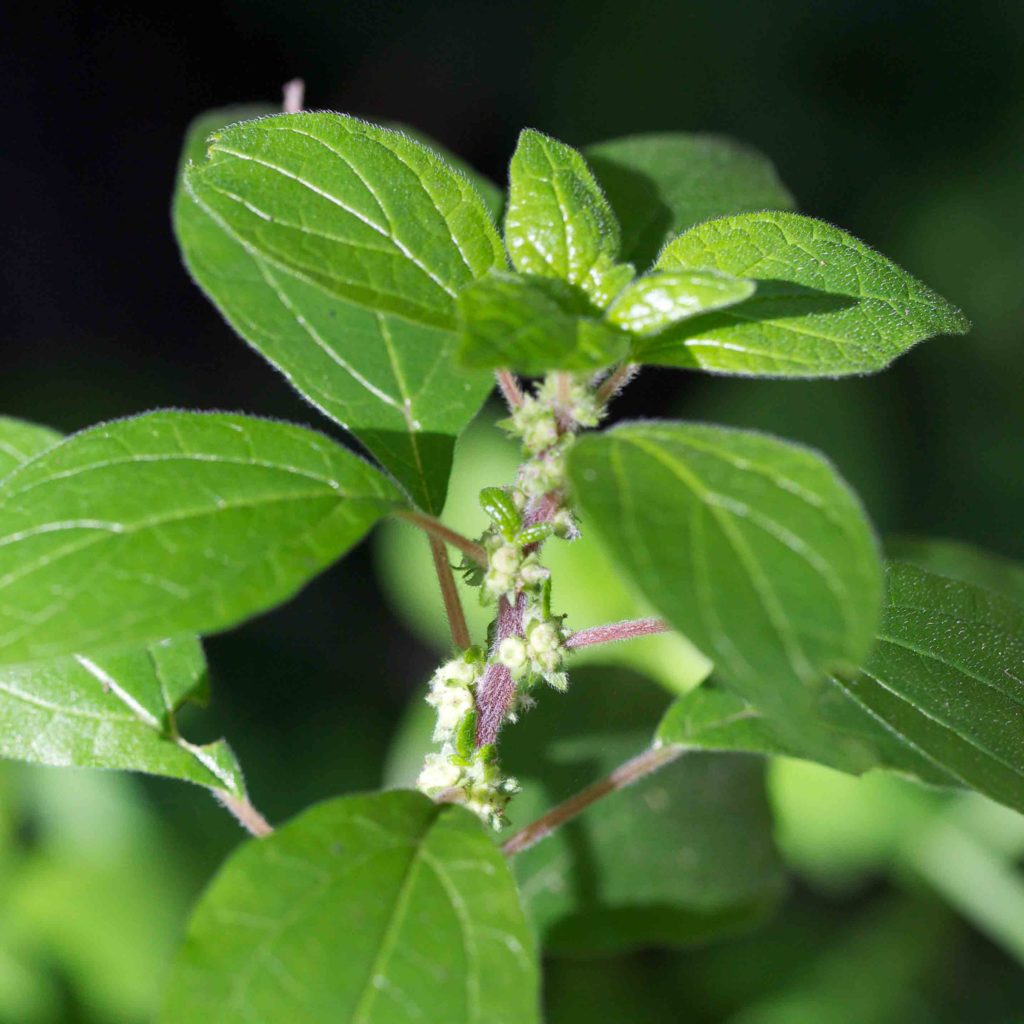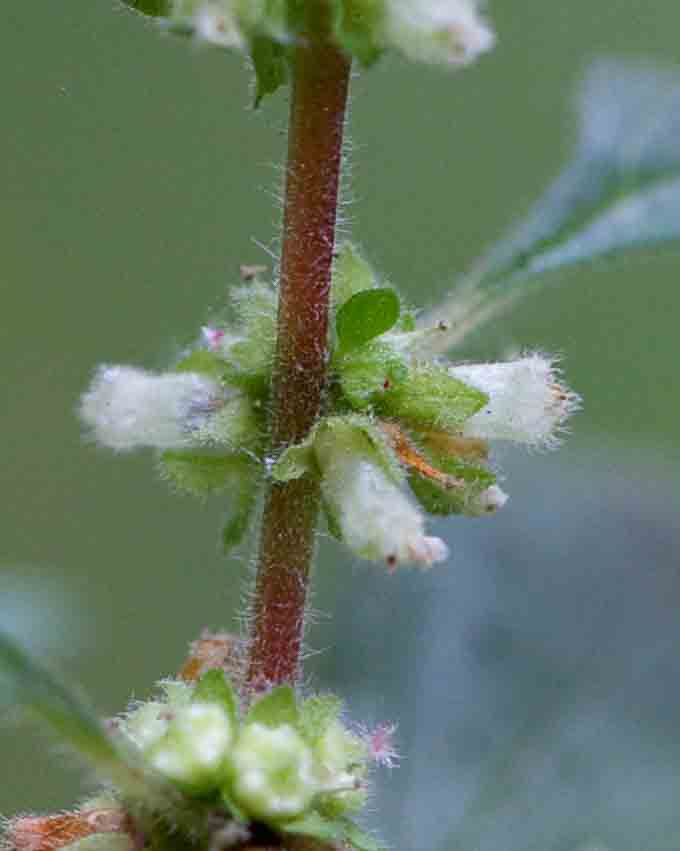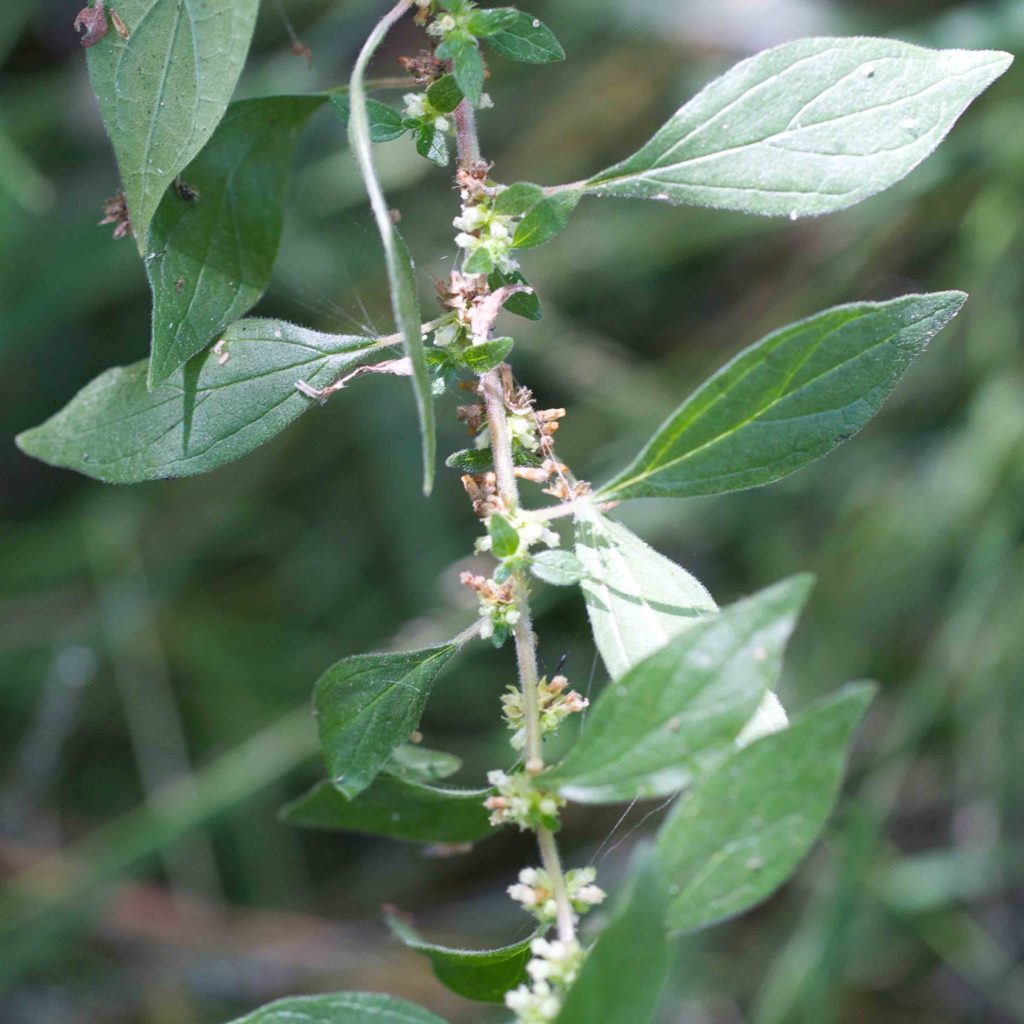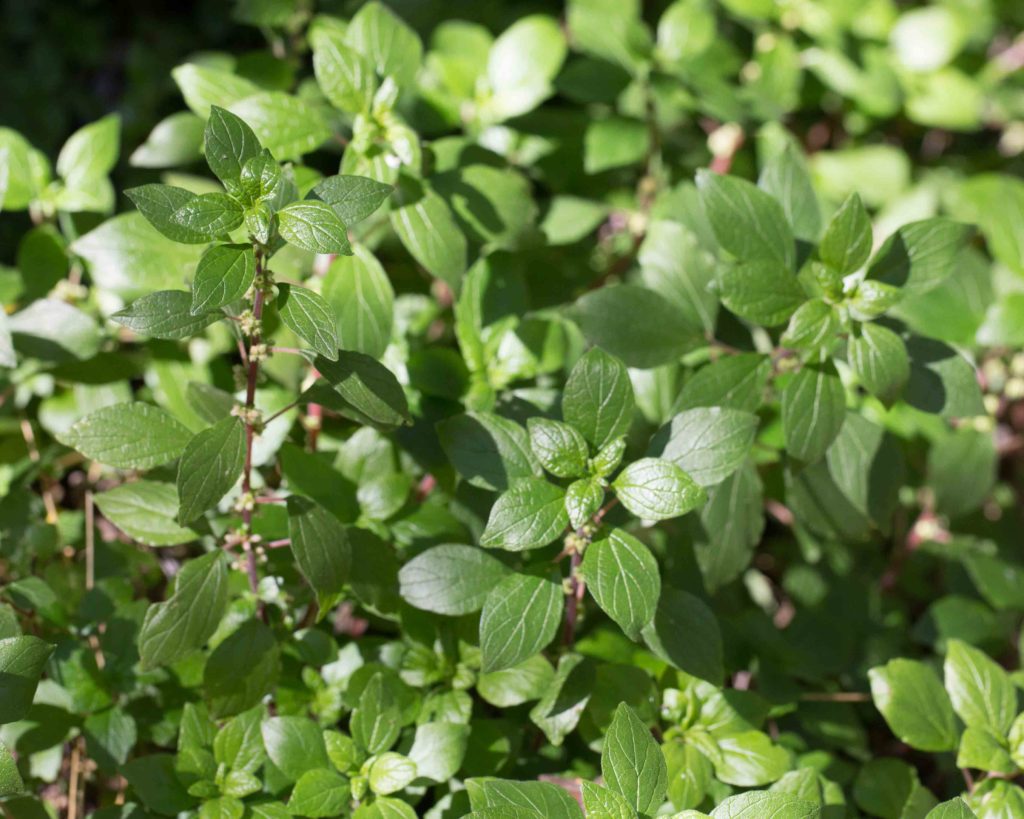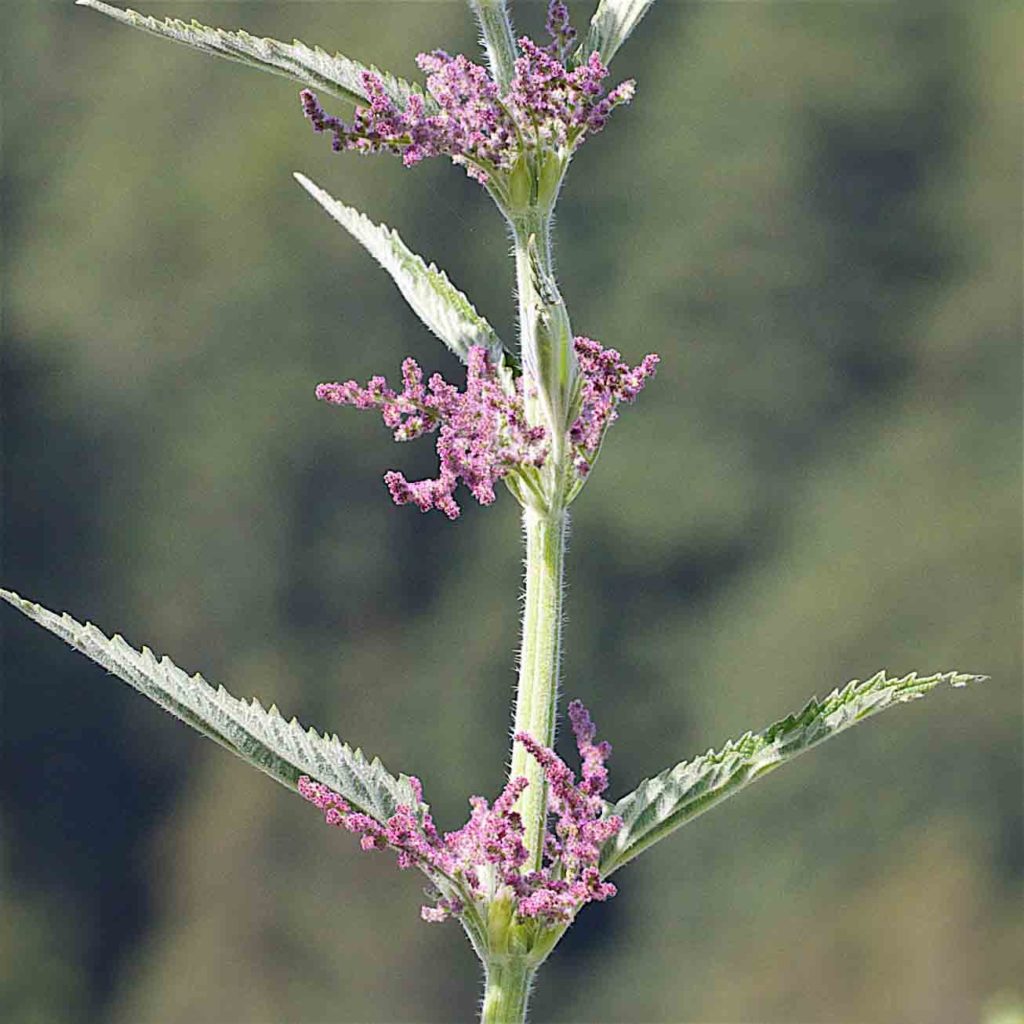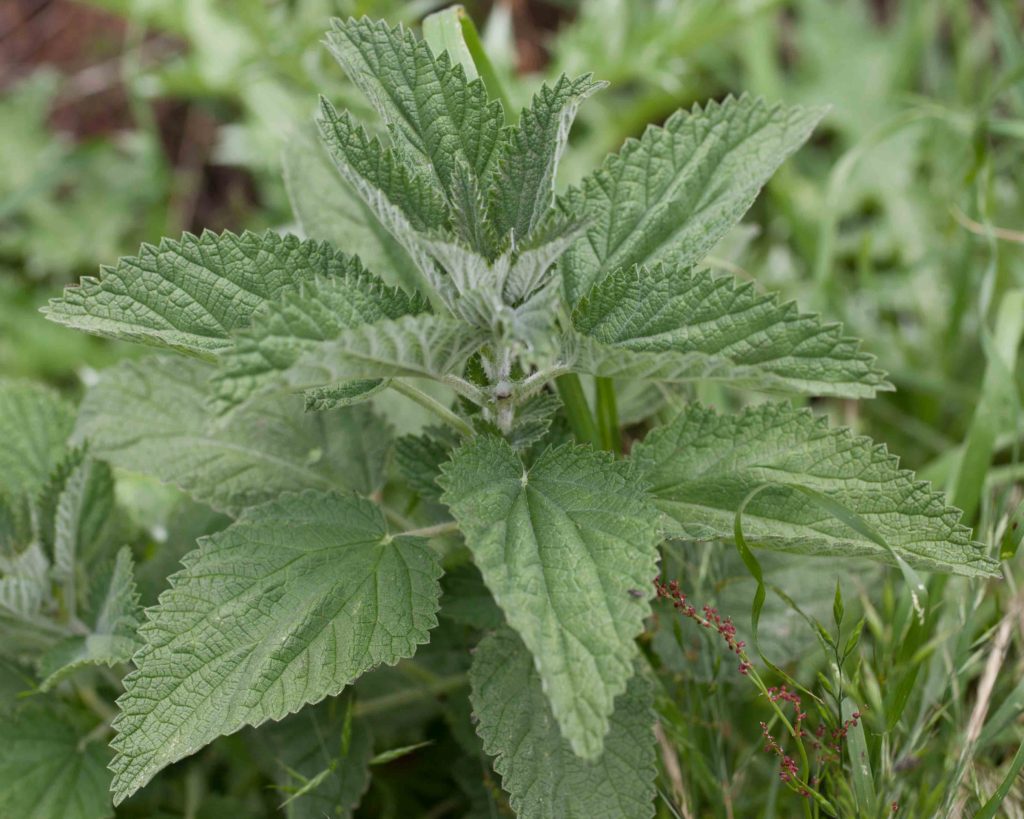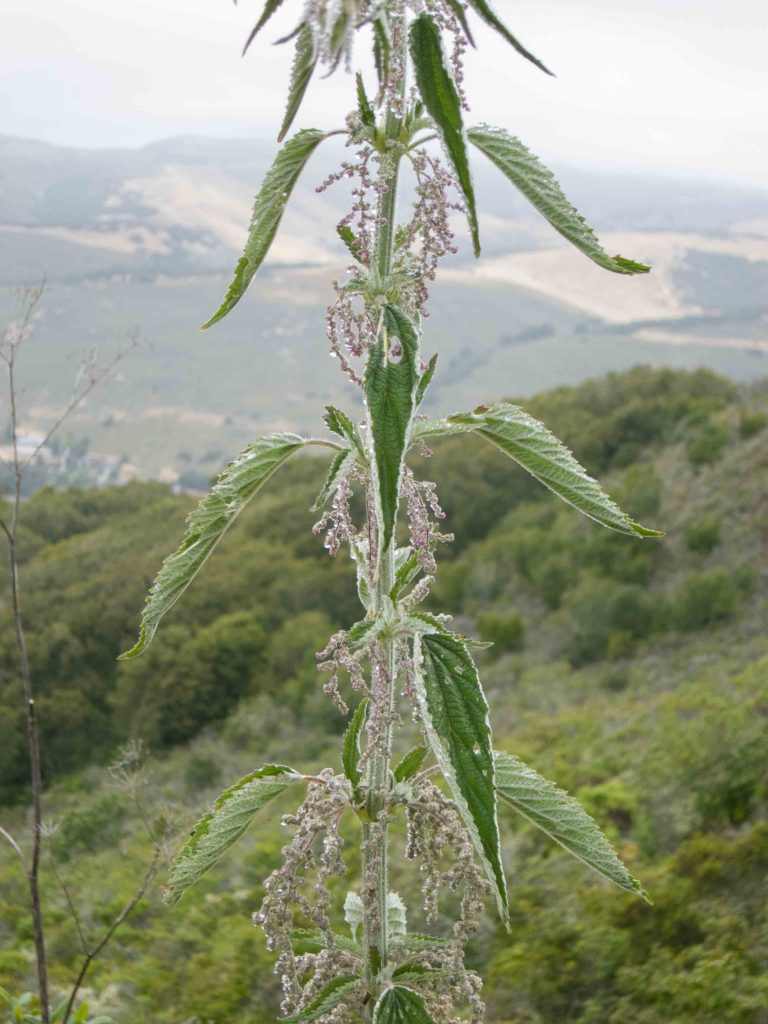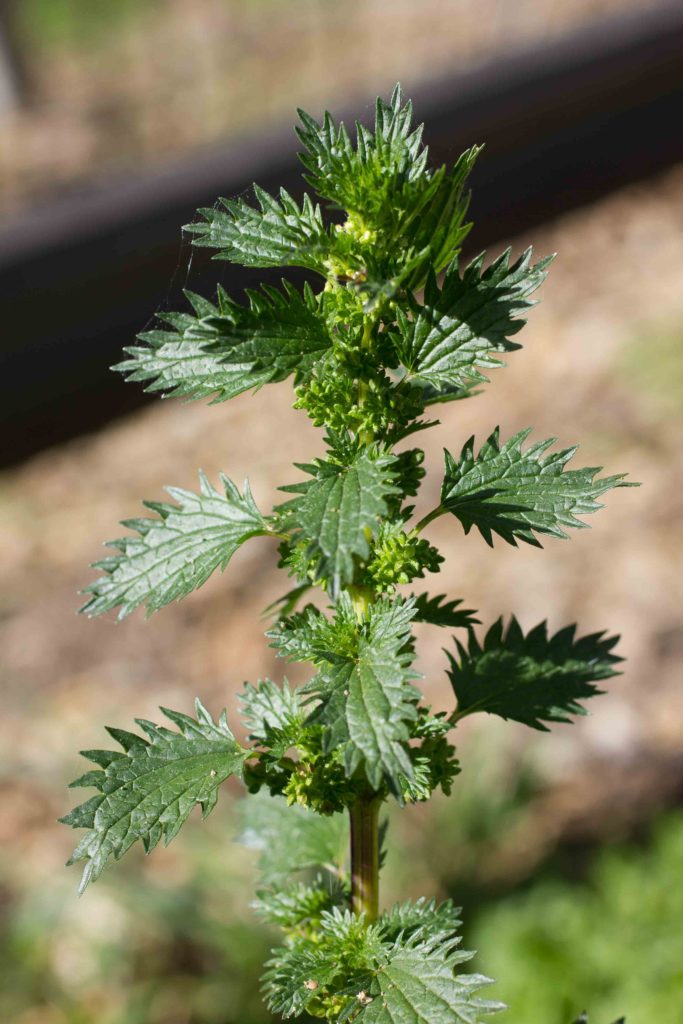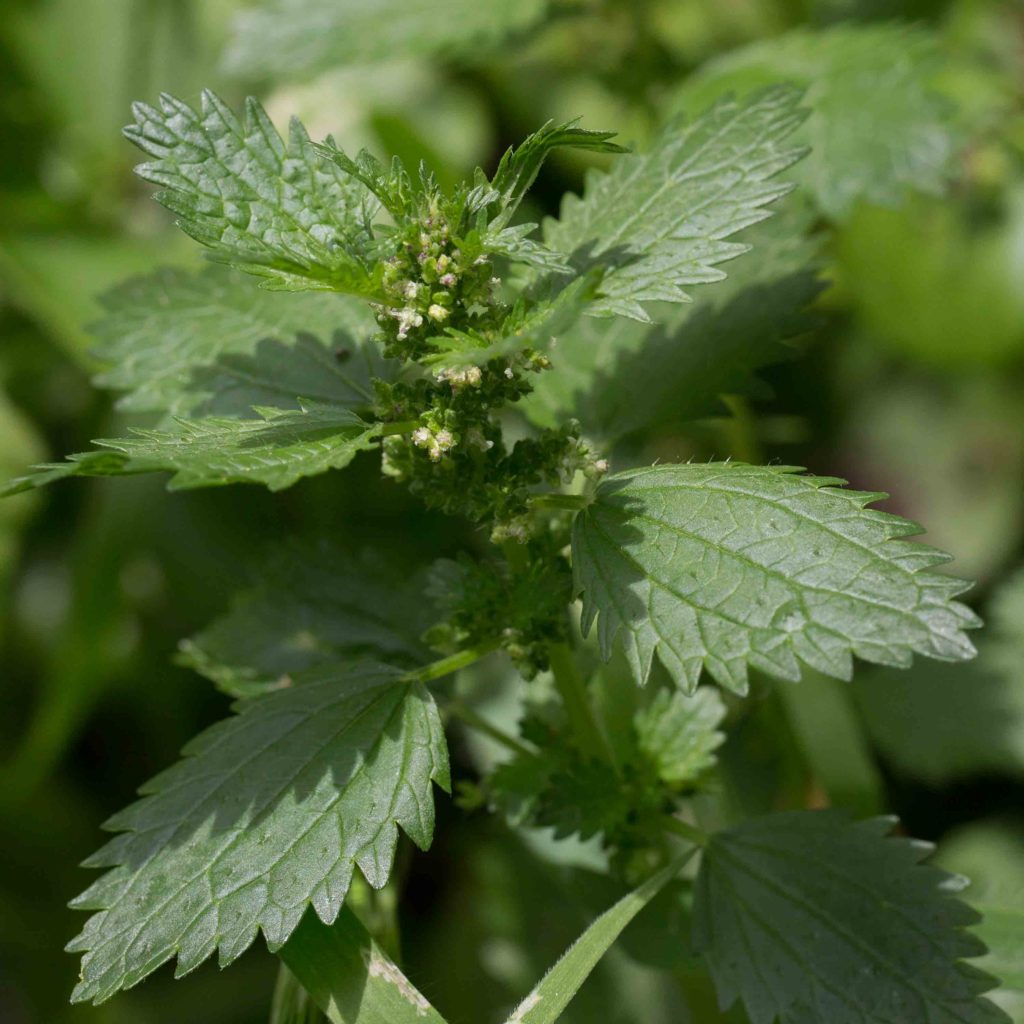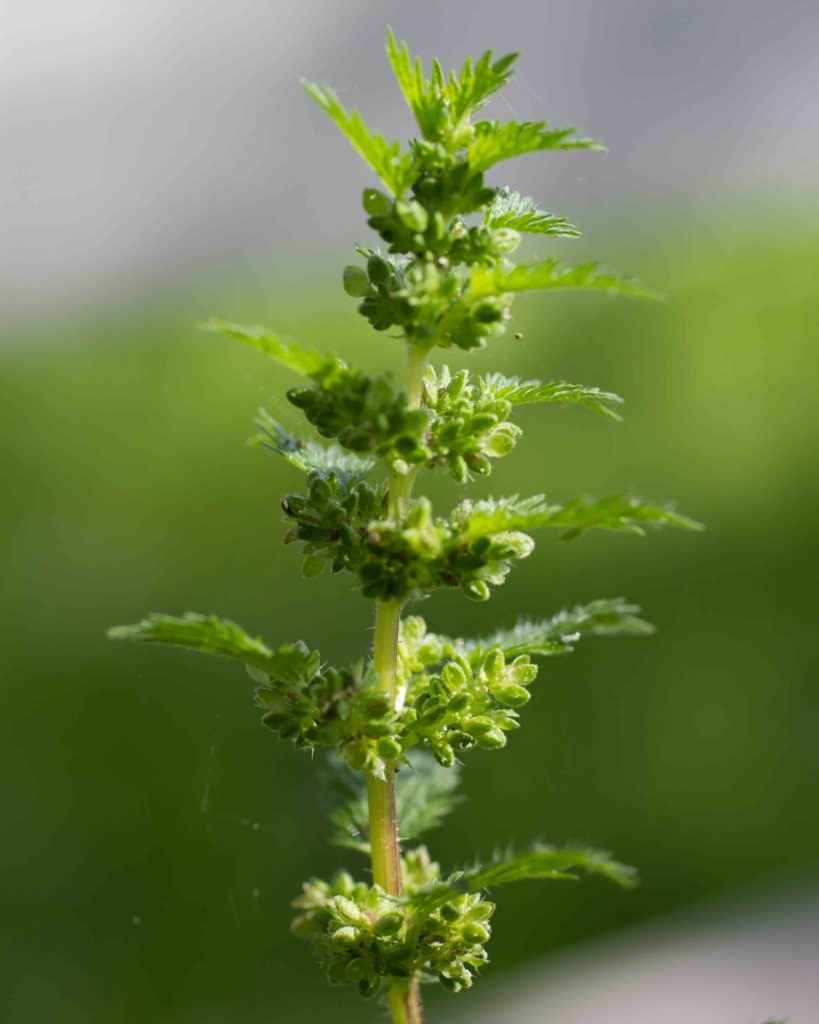Urticaceae: Nettle Family
Spreading Pellitory – Parietaria judaica
Blooms:
Nov–Aug
Plant Height:
10–80 cm
Flower Size:
Small cluster
Origin:
Europe, Africa
Habitat:
Moist places, common in coastal urban areas
Notes:
This is a non-stinging member of the nettle family – one of its few recommendations, as the plant is weedy and undistinguished. The stem is decumbent to erect with 1–9 cm long, narrowly lanceolate to widely ovate leaves. The leaf base is tapered to round, with an acuminate tip. The greenish-white flowers are inconspicuous, in small head-like clusters, found in leaf axils and at intervals along the stem.
Hoary Nettle – Urtica gracilis subsp. holosericea
Blooms:
June–Sept
Plant Height:
0.5–3 m
Flower Size:
Medium cluster
Origin:
Native
Habitat:
Moist places, many communities
Notes:
This has tall, unbranched stems with large 6–20 cm long leaves, gray-hairy below. The small flowers are in elongated clusters, often drooping. The plant is generally monoecious: separate male and female flowers on the same plant, in separate clusters. Caution: both this and Dwarf Nettle (Urtica urens, see below) are capable of dealing an unpleasant sting, even through clothing. Photo #1 by CJH.
Dwarf Nettle – Urtica urens
Blooms:
Jan–June
Plant Height:
10–60 cm
Flower Size:
Small cluster
Origin:
Europe
Habitat:
Disturbed places
Notes:
A common weed, this is much shorter than Hoary Nettle (Urtica gracilis, see above). It has smaller 2–4 cm long leaves, proportionately broader than those of Hoary Nettle, coarsely toothed, and green on both surfaces. The plant is generally monoecious: separate male and female flowers on the same plant, but growing together in head- or spike-like clusters immediately below the leaves. Caution: both this and Hoary Nettle are capable of dealing an unpleasant sting, even through clothing.
